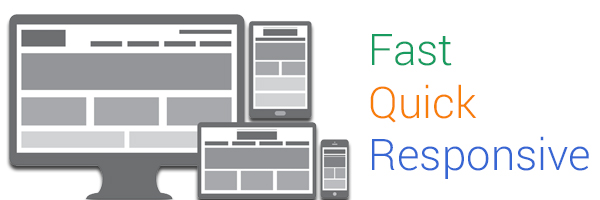Blog
Follow the latest thinking from people working at the cutting edge of innovation and have your say on everything from economic policy to robot overlords.
How to develop a fast, quick loading and responsive business website?
by Tayyab
Posted on

Embellished, well-constructed websites might be ‘eye candy’ to the person who is viewing it, but its page speed is will always be critical to your success. There are two advantages of having a fast loading website:
- It helps with their search engine rankings
- According to statistical data, 40 percent of visitors will abandon with website if it takes longer than three seconds for it to load properly. To add insult to injury, every single second added to the three second mark will result in a 7% decrease in the website’s conversion rate
So how exactly are web developers supposed to find a way around this near-impenetrable obstacle? Here are a few tips that you can use on developing a fast, quick loading and responsive website.
- Getting to know the basics
The key to helping your websites load faster is by reducing the front-end load time. For the visitor, 80 percent of that response time is tied up in HTTP requests. What is your objective at this point? To minimize those requests. How exactly are you going to do that?
-
Simple page design: A website will load faster if it possesses a simple page design. One or two images combined with text will be sufficient to reduce those HTTP requests but at the end of the day, everybody wants to have a website that resembles the Mona Lisa, and that would mean incorporating richer components on to the site.
-
Combining several elements: A combination will include taking all the scripts and piling them into a single script and, similarly, combining all CSS into a single stylesheet.
The rest of the performance techniques I’ll share with you will also render HTTP requests lower.
- Combining images with CSS sprites
If you have multiple images present on your page, you are forcing the server to make several trips for the packets to flow through in order to get all the resources secured. This will result in slowing the page speed. Sprites combine all background images on a page into one single image. The proper image segment will be displayed because of the CSS background-image and background-position properties.
- Enabling compression
Another way of creating a fast, quick loading and responsive website is by compressing resources by using deflate or GZIP to actually lower the number of bytes a page is sending over a network. Using the GZIP compression algorithm, most web servers are able to execute this automatically on HTML, CSS and JavaScript. However, you web developers are not out of the woods just yet. You will have to optimize your content for further compression. This can be done by using the following tips:
-
Create consistency across your HTML and CSS code
-
The same function must be applied with to your HTML attributes
-
Use lowercase letters as much as possible
-
Observing consistency with HTML tag attribute quotes
-
Getting rid of unnecessary extra space. This will speed up the downloading and executing process
Using the above tips, you will be able to construct a quick, fast loading and responsive website in no time.
